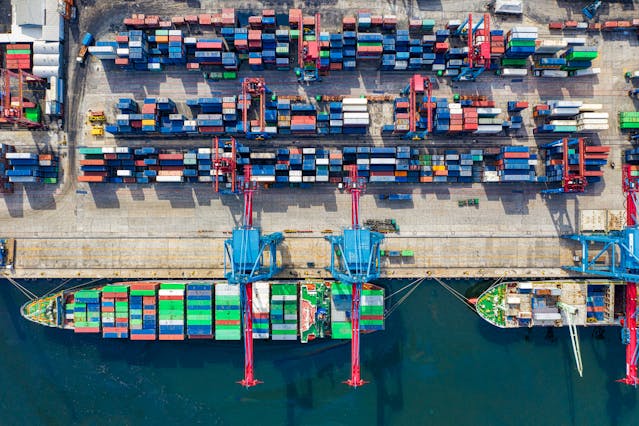A must see for freight forwarders! Full process of dangerous goods space review in Carrier + pit avoidance guide (with practical analysis of IMDG rules)
 2025-04-18
2025-04-18
 5
5

1. "Customs clearance document" for dangerous goods booking (with real cases)
Recently, a colleague, Lao Zhang, was stuck in the preparation of materials: the customer was in a hurry to issue three types of flammable liquids, but the difference between the UN number and MSDS on the dangerous package certificate was the last digit, which was delayed for 5 days! Remember that these three "life-saving documents" must be perfectly fitted:
- MSDS bilingual version: Focus on item 14 transportation information, especially UN number, PG packaging grade (I strictest/III loosest), flash point (for example, gasoline must be ≤ 60 ℃)
- Dangerous package certificate: Don't think that everything will be fine if you have it. Last time, the packaging grade of a certain chemical product was written as Class II, but it actually required Class I steel drums, which were directly sent back by Carrier
- Book entrustment: If you write the wrong UN number, you may ask for amendment charge! Especially large shipowners such as HMM and MSC, they would rather check three times more than slip their hands
II. The "triple door" of Carrier audit (with TT estimate)
- Initial screening stage (within 1 day):
- Check the consistency of the three orders: UN number, product name and packaging category must be unified
- Look at the feasibility of transportation: for example, many Carrier directly refuse to accept Category 4.2 spontaneous combustion substances
- Common stuck points: expired dangerous package certificate, lack of emergency measures in MSDS
- Packing details: Last year, there was a batch of ordinary wooden boxes for 8 categories of corrosive products, but it was found that the lining thickness was not enough
- Special requirements: For example, lithium batteries must carry UN38.3 reports, and radioactive materials require additional licenses
- Isolation prediction: For example, Category 5.1 oxidants and Category 4.1 flammable materials, the system will automatically mark red
- Tripartite review (possibly additional 1-2 days):
POD has the strictest investigation! Last month, a ticket of chemicals was randomly inspected in Rotterdam. Fortunately, GHS labels were prepared in advance. Pay special attention:
- Southeast Asian ports: Original dangerous package certificate
- European Ports: Focus on SDS Compliance with REACH
- American Line: Report AMS dangerous goods information in advance
III. The "survival rule" of dangerous goods stowage (with quick check of isolation code)
- Isolation level actual combat formula:
- "Keep away" (Code 1): At least 1 bin space laterally separated for different classes of dangerous goods
- "Isolation" (Code 2): The top and bottom cannot be vertically aligned, such as fireworks and compressed gas
- "Full compartment isolation" (Code 3): Acids and alkalis must be separated into compartments with fuel tanks in between
- Class 4.3 Water burning products: must be placed on the deck and avoid fire pipelines
- Class 2.1 flammable gases: prohibited near the engine room/living area
- Class 1 explosives: Many Carrier directly black out
- LCL unspoken rules:
- Minimum charge: starting from 3CBM, if it is not enough, you will be charged according to this
- Death combination: Class 8 acids and Class 8 bases must not be mixed, even if they are both Class 8
- Sensitive products: magnetic goods must be degaussed in advance
4. Guide to avoiding pitfalls for experienced drivers
- Data timeliness: MSDS should be versioned within 2 years. Pay attention to the issuance date of dangerous package certificate
- Declaration consistency: The UN number of manifest/bill of lading/customs declaration must be exactly the same, starting from US $200 in amendment charge
- Shipping schedule reservation: It is recommended to keep an additional 3-day review period for high-risk products, especially for categories 4.2/5.2
- Emergency plan: Bring absorbent cotton and protective gloves with the vehicle, and keep the photos of the packing bottom
Isolation level comparison table
| Code | Quarantine requirements | Horizontal spacing (deck) | Typical cargo mix |
|---|---|---|---|
| 1 | Different floors in the same cabin/3 meters apart | ≥ 3 meters | Class 4.1 vs Class 6.1 |
| 2 | Divided fireproof cabins/decks 6 meters apart | ≥ 6 meters | 1.3 G Fireworks vs Class 2.1 LPG |
| 3 | Separate compartment/fuel tank isolation | ≥ 12 meters | Class 8 acids vs Class 8 bases |
Note: The special stowage code in column 16 of the List of Dangerous Goods shall be checked simultaneously for actual stowage (such as SW1 to avoid heat source and SW2 to avoid living area)


A complete guide to the import and export of lead-acid batteries, customs supervision that must be known for freight forwarders and foreign trade, dangerous goods transportation rules, and response to new overseas regulations


Distinguish SOC/COC/OWC Container in three minutes, and teach you how to use the right box type to save 30% of logistics costs





















